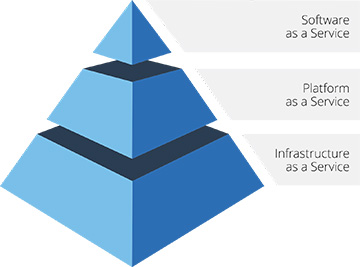Cloud Computing 101
Any technology discussion today is incomplete if it does not refer to ‘cloud computing’ or ‘cloud technology’ or just ‘cloud’ in some form or other. Cloud computing has taken centre stage in recent years and as the technology matures and best practices are developed, its numerous benefits are hard to ignore.
As adoption escalates and market analysts continue refining industry projections upwards, we thought it was an opportune time to produce a quick guide to this revolutionary technology that Gartner has declared to be “one of the most disruptive forces of IT spending since the early days of the digital age”.
What is Cloud Computing?
Gartner defines cloud computing as a style of computing in which scalable and elastic IT-enabled capabilities are delivered as a service using Internet technologies.
According to the National Institute of Standards and Technology, Cloud computing is a model for enabling convenient, on-demand network access to a shared pool of configurable computing resources (e.g. networks, servers, storage, applications, and services) that can be rapidly provisioned and released with minimal management effort or service provider interaction.
Entrenched within these definitions are the five key characteristics of cloud computing:
- Computing resources made available on-demand, in a self-service fashion without requiring human intervention.
- A ubiquitous network of computing resources and infrastructure that can be accessed from anywhere.
- A common, shared pool of resources that are dynamically assigned, reassigned or de-allocated based on requirement.
- The ability to provision or release resources rapidly leading to a high elasticity and scalability.
- A ‘pay as you go’ billing model wherein customers only pay for the resources they need, for as long as they need it.
Cloud Service Models
The cloud stack typically consists of three services that are interconnected and dependent on each other. Each can be used as an independent service or collectively.
Software as a Service (SaaS)
SaaS is a method of deploying software over the internet, usually as an on-demand service, through a subscription “pay-as-you-go” model. The cloud provider hosts and manages the software application, the underlying infrastructure and handles all maintenance, such as software upgrades and security patching.
 SaaS allows organisations to get up and running with an application quickly, and with minimal upfront cost, at guaranteed levels of availability and data security.
SaaS allows organisations to get up and running with an application quickly, and with minimal upfront cost, at guaranteed levels of availability and data security.
Platform as a Service (PaaS)
PaaS can be defined as a computing platform that support the complete web application lifecycle – building, testing, deploying, managing, and updating – of web applications or software. Like IaaS, PaaS includes infrastructure – servers, storage, and networking – but in addition it also includes the middleware, development tools, business intelligence services, database management systems, and more.
Users can develop and deliver web-based applications quickly and easily, without the complexity of buying and maintaining the software and infrastructure underneath it.
Infrastructure as a Service (IaaS)
IaaS is a way of delivering IT infrastructure – servers, storage, databases, network, and operating systems – in a public or private cloud as an on-demand service. In this model, the provider is responsible for the shared pool of resources and equipment and the customer is responsible for the applications running on the equipment.
IaaS is cost effective for organisations as they do not have to invest in expensive hardware and only have to pay for what they use. Customers are billed using a utility model, whereby the resources are made available to them on an as-needed basis and they are charged based on actual usage.
Cloud Deployment Models
A cloud computing model can be deployed in three different ways. It is important to understand each of these options in order to determine which one will best suit your organisation’s needs.
Public Cloud
A public cloud is a publicly accessible cloud environment owned by a third-party cloud provider. The computing resources like server and storage are delivered to consumers over the internet and at a cost. The cloud provider is responsible for the creation and ongoing maintenance of all hardware, software and other supporting infrastructure; and users can simply access these services using a web browser.
Private Cloud
A private cloud refers to cloud computing resources used exclusively by a single business or organization, and one that ensures that an organization’s data and applications are completely isolated from others. The computing resources can be physically located either on-premises, or can be hosted as a private cloud by a service provider.
Hybrid Cloud
A hybrid cloud is combination of public and private cloud environments, bound together by technology that allows data and applications to move freely between them, as dictated by changing business needs. Usually public cloud is used for the less sensitive, generic applications and data storage, while the more secure private cloud delivers legacy applications and business critical data.
Benefits of Cloud Computing
So why should you consider a move to the cloud? Whilst cost considerations may serve as the initial drivers, a move to the cloud has numerous other advantages that make it a compelling choice for organisations. Cloud enables businesses to treat technology as a utility service, using as much as they need, when they need, without capital investment or the extensive human resources and planning that are normally required.
The benefits of agility, scalability, availability, accessibility, reliability, geographic redundancy, reduced maintenance, enterprise capability and speed to market are all backed by strong service level agreements that make cloud adoption compelling for businesses of all sizes – especially those in the mid-market who are facing significant infrastructure upgrades to meet growth demands. You can read more about the top 10 benefits of cloud in an earlier post here.
blueAPACHE own and manage our own enterprise-grade cloud infrastructure with ‘five nines’ availability and multi-layered redundancy in geographically diverse datacentres across Australia. To learn more about how your organisation can use cloud computing to gain a competitive advantage, contact the blueAPACHE account team.

